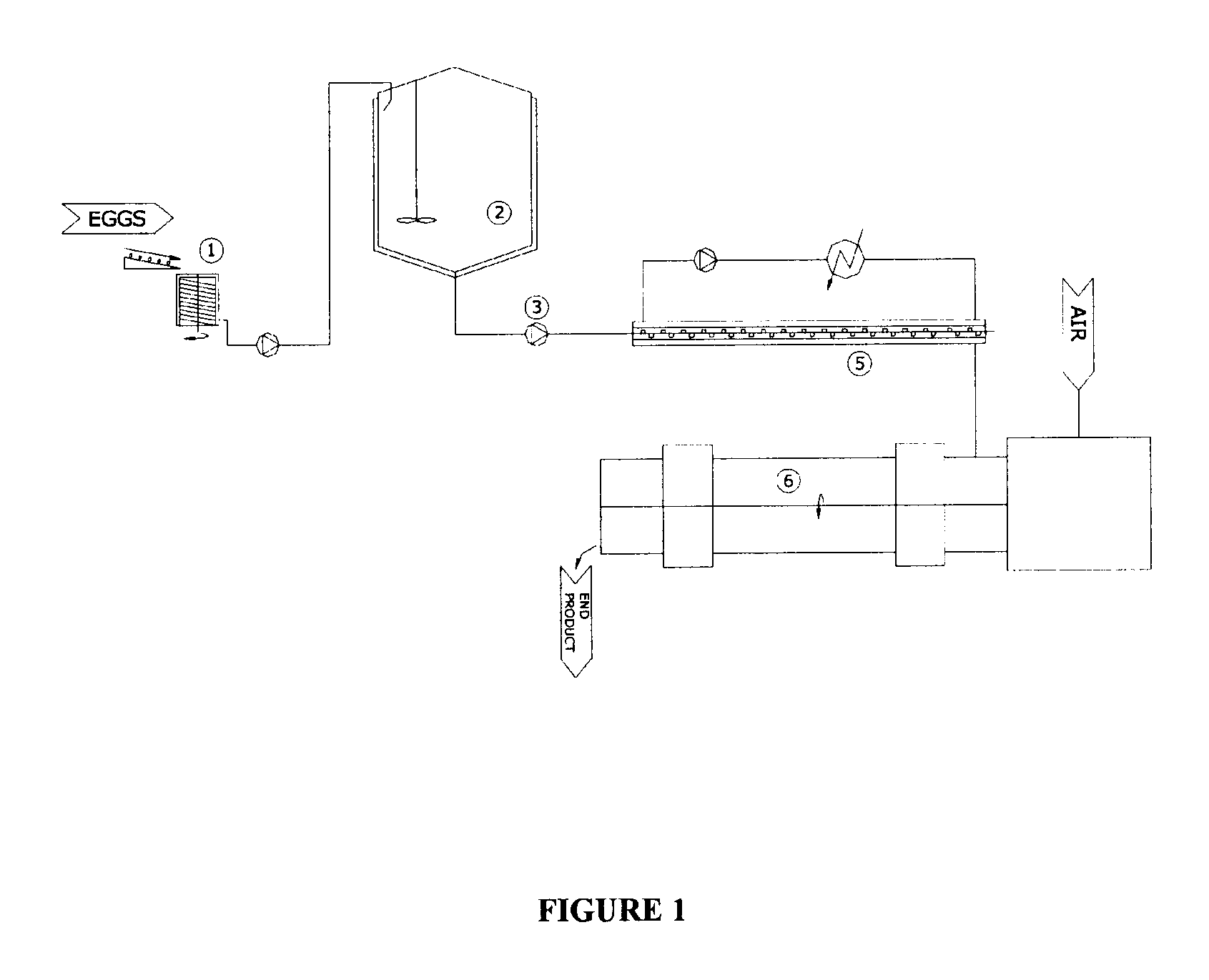Process for the coagulation of wasted eggs
a technology for processing waste eggs and eggs, applied in the field of processing waste eggs, can solve the problems of difficult transportation and handling of waste eggs, serious logistical and environmental problems, and the potential dangers of public health and animal health of animal by-products not intended for human consumption
- Summary
- Abstract
- Description
- Claims
- Application Information
AI Technical Summary
Benefits of technology
Problems solved by technology
Method used
Image
Examples
example
Example 1
[0092]A hatchery handling 800,000 fertilised chicken eggs a week generates an average of about 80,000 (10%) wasted eggs a week. These eggs were processed according to the invention.
[0093]The wasted eggs are detected a few days before hatching, by passing the eggs through a machine which selects, using a light detector, eggs with formed embryos and discard those that did not incubate.
[0094]The wasted eggs are conveyed to a shell centrifuge to separate the shell, and then to a storage tank maintained with stirring at 4° C. The storage tank contains an amount of about 2,000 Kg (L) of liquid egg, corresponding to about 40,000 wasted eggs.
[0095]Citric acid is added to the storage tank in an amount of 4.5 g per kg of wasted liquid egg, adjusting the pH to about 5.0.
[0096]The mixture of liquid egg and citric acid is kept for 2 days until it is pumped to a scraped surface heat exchanger of 18 meter length, in sections of 6 meters, each which is heated up to 85° C. with warm water. ...
PUM
 Login to View More
Login to View More Abstract
Description
Claims
Application Information
 Login to View More
Login to View More - R&D
- Intellectual Property
- Life Sciences
- Materials
- Tech Scout
- Unparalleled Data Quality
- Higher Quality Content
- 60% Fewer Hallucinations
Browse by: Latest US Patents, China's latest patents, Technical Efficacy Thesaurus, Application Domain, Technology Topic, Popular Technical Reports.
© 2025 PatSnap. All rights reserved.Legal|Privacy policy|Modern Slavery Act Transparency Statement|Sitemap|About US| Contact US: help@patsnap.com

